A toilet flange is a pipe fitting that connects a toilet to the drains in your home. The flange is usually made of plastic, metal, or rubber, and it sits on top of the drainpipe. The flange is what allows you to screw the toilet into the drainpipe. Without a flange, you would not be able to connect the toilet to the drain.
If your toilet is leaking, the flange is probably to blame. A flange is the part that connects the toilet to the floor and many things can cause a leaky flange, but the most common cause is a bad seal. If the flange is not sealed properly, water can seep through and cause leaks. To fix a leaky flange, you will need to replace the gasket or seal.
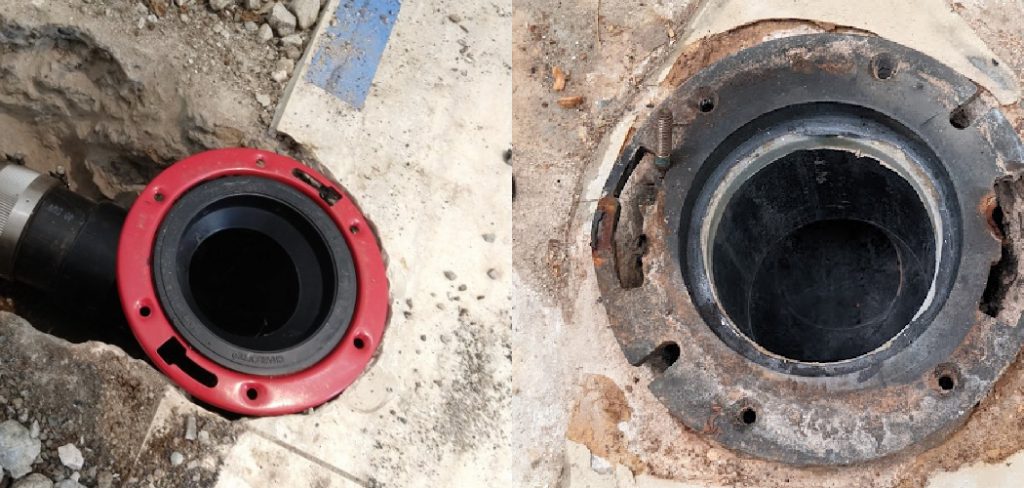
Dealing with a broken toilet flange can be frustrating, but it doesn’t have to be difficult. Here is a guide on how to fix a broken toilet flange in concrete floor, using easy-to-follow steps. Keep in mind that this process may vary depending on the severity of the break. Be sure also to consult your local hardware store or plumbing professional for advice specific to your situation. With a little bit of patience and elbow grease, you can have your plumbing system back up and running in no time.
Summary: If your toilet is leaking and the flange is broken, you can fix it in concrete floor. First, use a plunger to suck out any water and debris from the bowl. Next, use a pry bar to remove the broken flange. Finally, replace the flange with a new one and attach it using self-tapping screws.
Types of Toilet Flange
There are three types of toilet flange: PVC, ABS, and metal. Each type has its own advantages and disadvantages that you need to take into consideration before making a purchase.
PVC
PVC is the most common type of toilet flange. It is durable and easy to install. However, it is not as strong as ABS or metal and can break if you put too much weight on it.
ABS
ABS is a stronger and more durable material than PVC, making it less likely to break. However, it is more difficult to install and is not as common. Be sure to use the correct type of saw when cutting ABS to avoid any complications. If you are unsure, ask a professional for assistance.
Metal
Metal toilet flanges are the strongest and most durable type, but they’re also the most expensive. They’re usually made of stainless steel or brass, with brass being the softer metal and thus more prone to breakage.
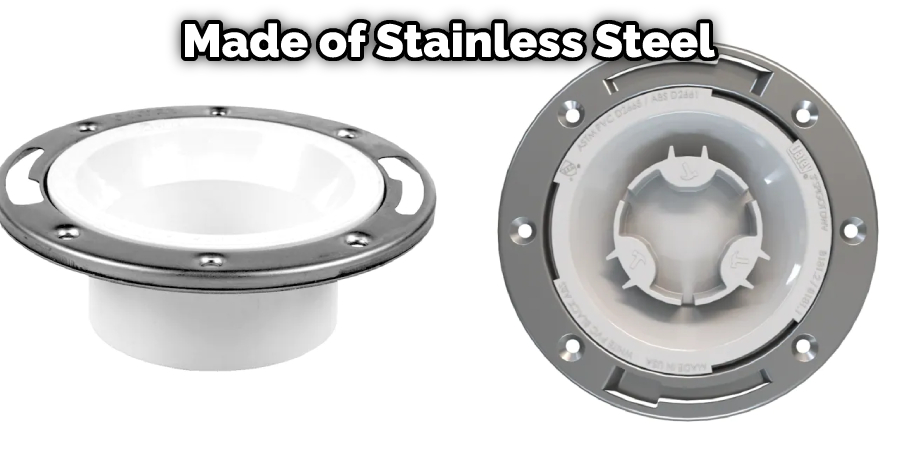
Tools and Materials
- Toilet flange
- Level
- Tape measure
- Drill
- 1/8 drill bit
- Jigsaw with a metal cutting blade
- Hammer
- Chisel
- Trowel
- Caulk gun
- Silicone caulk
8 Easy Ways on How to Fix a Broken Toilet Flange in Concrete Floor
1. Turn Off the Water Supply
The first thing you need to do to fix your broken flange is to shut off the water supply leading to your toilet. This will prevent any further flooding or water damage. Next, use a wrench to disconnect the water supply line from the wall and flush the toilet to drain any remaining water in the tank.
2. Remove the Toilet Bowl
Once the water is turned off, you can now remove the toilet bowl. Be very careful when doing this so as not to damage the porcelain. Use a putty knife to loosen the caulk that is holding the bowl in place. You may also need to use a small pry bar to help loosen it. Once it is loose, lift the bowl straight up and set it aside.
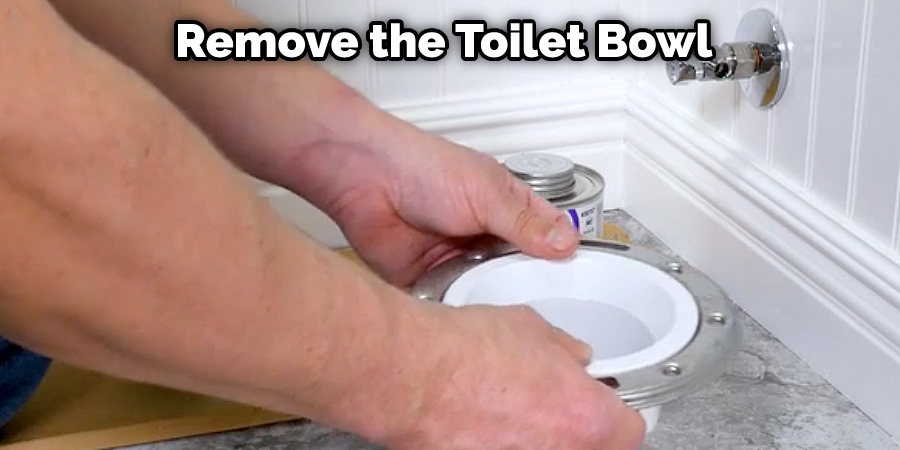
3. Remove the Old Flange
The flange is the part of the toilet that is attached to the pipe. To remove the old flange, you need to unscrew any screws or bolts that are holding it in place. If the flange is glued or cemented to the pipe, you will need to use a chisel and hammer to break it free. Once it is loose, you should be able to pull it up and out of the hole. If the old flange is in good condition, you may be able to reuse it. However, if it is damaged or corroded, you will need to replace it with a new one.
4. Clean the Area Around the Hole
If the toilet is leaking, the first thing to do is remove the old flange (the part that connects the toilet to the floor). Then, clean up the area around the hole with a wire brush. This will help ensure that the new flange will have a solid, clean surface to adhere to. If there are any cracks or holes in the concrete, use a concrete patch to fill them in. Once the area is clean and prepped, you’re ready to install the new flange.
5. Position the New Toilet Flange
There are a few different types of toilet flanges, but they are all installed in essentially the same way. First, clean off the top of the old wax ring and the inside of the toilet flange. Then, line up the holes in the new flange with the bolts in the floor, and press it down onto the wax ring. If your new flange doesn’t have built-in bolts, you’ll need to install them now. To do this, thread the bolts through the flange and tighten them with a wrench until they’re snug. Finally, screw on the retaining ring to hold the bolts in place.
6. Reconnect the Toilet to the Flange
Now that the new flange is installed, you can reconnect the toilet to it. Begin by applying a generous amount of plumber’s putty around the bottom of the toilet base. Then, lower the toilet onto the flange, being careful not to move it too much or jostle it out of place. Once the toilet is in position, use a putty knife to smooth the putty around the base, creating a seal.
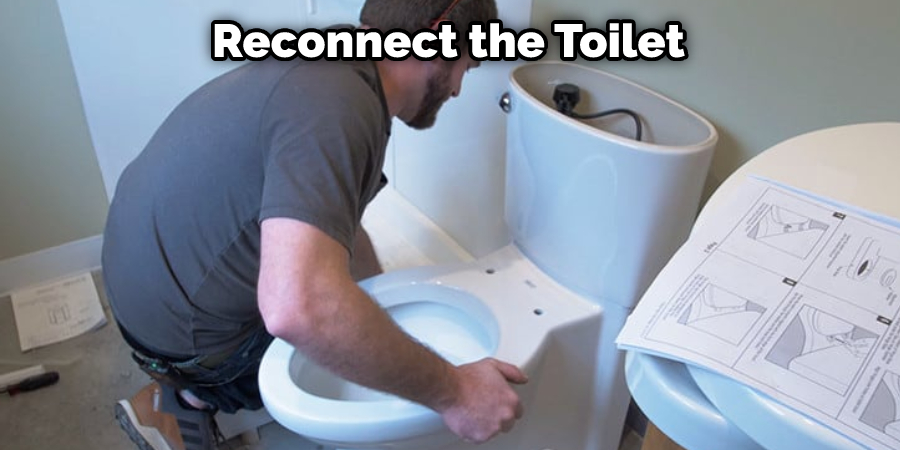
7. Insert the Bolts
Next, insert the bolts that will secure the toilet to the flange. For this step, you will need to refer to your toilet’s instructions, as the bolts may need to be inserted in a specific order. Once the bolts are in place, use a wrench to tighten them until the toilet is securely attached to the flange.
8. Reconnect the Water Supply Line
Finally, reconnect the water supply line to the toilet and turn on the water to test the connection. If everything is functioning properly, your toilet should be back to normal.
Tips and Warnings on How to Fix a Broken Toilet Flange in Concrete Floor
Tips
- Don’t despair if your toilet flange is broken. It’s a common problem and one that can be easily fixed with the right tools and techniques.
- Before you begin, make sure that you have the following tools and materials on hand: a power drill, a saw (reciprocating or jigsaw), a hammer, a chisel, and of course, replacement parts for your toilet flange.
- It’s also important to wear protective gear while you’re working, including gloves, safety goggles, and a dust mask.
- Start by removing the old flange. If it’s made of plastic, you may be able to pry it up with a screwdriver or similar tool simply. If it’s made of metal, you’ll need to use the saw to cut through the bolts that hold it in place.
- Once the old flange is out of the way, take a look at the state of the concrete around it. If it’s cracked or damaged, you’ll need to repair it before proceeding.
- To do this, mix some concrete patching compound and apply it to the damaged area with a trowel. Then, use a putty knife to smooth it out.
- Now it’s time to install the new flange. First, apply a generous amount of plumber’s putty around the underside of the flange.
- Then, press the flange into place and use a hammer to tap any loose edges down.
- Finally, use the screws that come with the new flange to secure it in place.
- Give the putty and concrete time to set properly before using the toilet again.
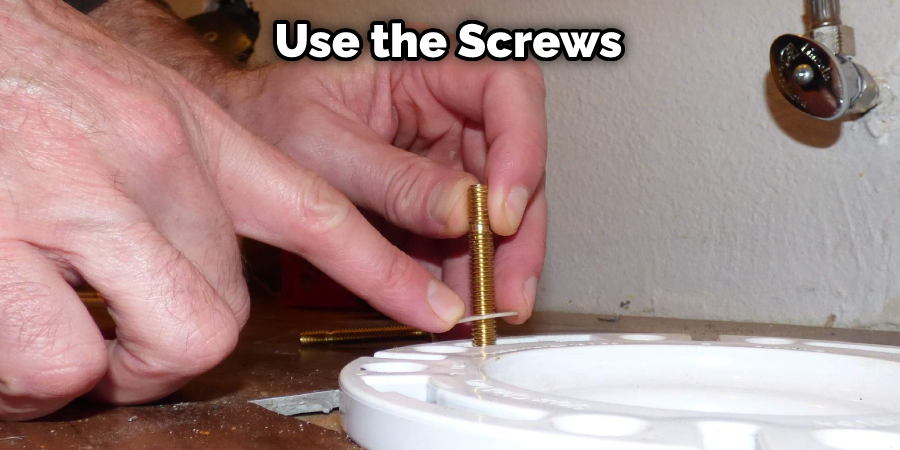
Warnings
- Be careful when working with tools like saws and chisels – they can be dangerous if you’re not careful.
- Be careful not to damage the concrete around the toilet flange when removing or installing a new one.
- Follow the instructions that come with your replacement parts carefully, as they may differ slightly from the ones outlined here.
- If you’re not confident in your abilities to complete this project, it’s best to call a professional. Failing to fix a toilet flange on your own could cause further damage that will be even more difficult (and expensive) to repair.
Frequently Asked Questions
Are Toilets Bolted to the Floor?
No, toilets are not bolted to the floor. This urban legend first appeared in the early 1900s and is most commonly associated with schools or public restrooms. It goes like this: because of a lack of funds, school districts were forced to install low-cost toilet guns that were attached to the floor instead of being raised off the ground. Over time, this resulted in children learning how to use them and eventually spreading rumors about their accessibility from below.
Fortunately, there is no truth to this story!
Should a Toilet Be Fixed to the Floor?
Generally speaking, it’s a good idea to fix a toilet to the floor so that it doesn’t wobble and make noise. This will help to reduce the chances of it becoming contaminated and causing problems for you or your family. As always, be sure to consult with a professional if you have any questions or concerns about your toilet – they can help you decide what’s best for your situation.
Does a Toilet Flange Need to Be Screwed to the Floor?
From a sanitary standpoint, it may be better to have toilets bolted to the floor in order not to risk accidents. Additionally, this could reduce noise levels and improve the overall quality of life in your home.
Can You Put a New Toilet Flange over an Old One?
Although it’s not recommended, you can sometimes put a new toilet flange over an old one. This is because the bolts that hold the bowl to the floor and tank are adjustable, so it may be possible to tighten them up enough so that the bowl doesn’t fall off. However, doing this could result in leaks and other problems down the line, so it’s always best to call a professional if you’re having trouble with your toilet.
Conclusion
This article has shown you how to fix a broken toilet flange in concrete floor. Ensure that you have all of the necessary tools and materials before beginning this project. Remember to take your time and be careful when working with concrete, as it can be dangerous if not handled properly. If you have any questions or run into any problems during this project, please don’t hesitate to contact us for help. We hope you find this information helpful and that you are able to fix your broken toilet flange using these steps successfully. If you have any tips or advice on how to fix a broken toilet flange in concrete floor that you would like to share, please leave them in the comments section below. Thanks for reading.
